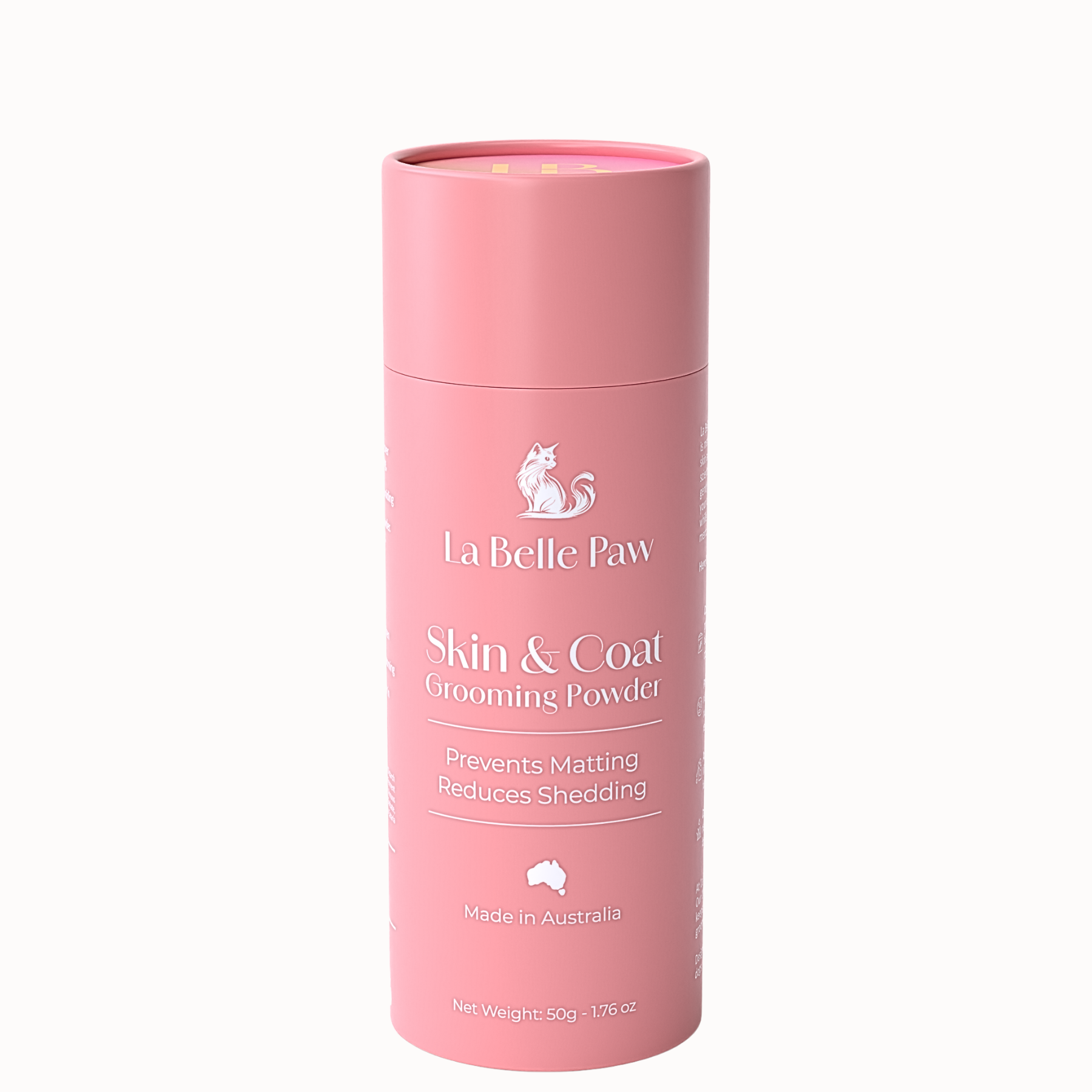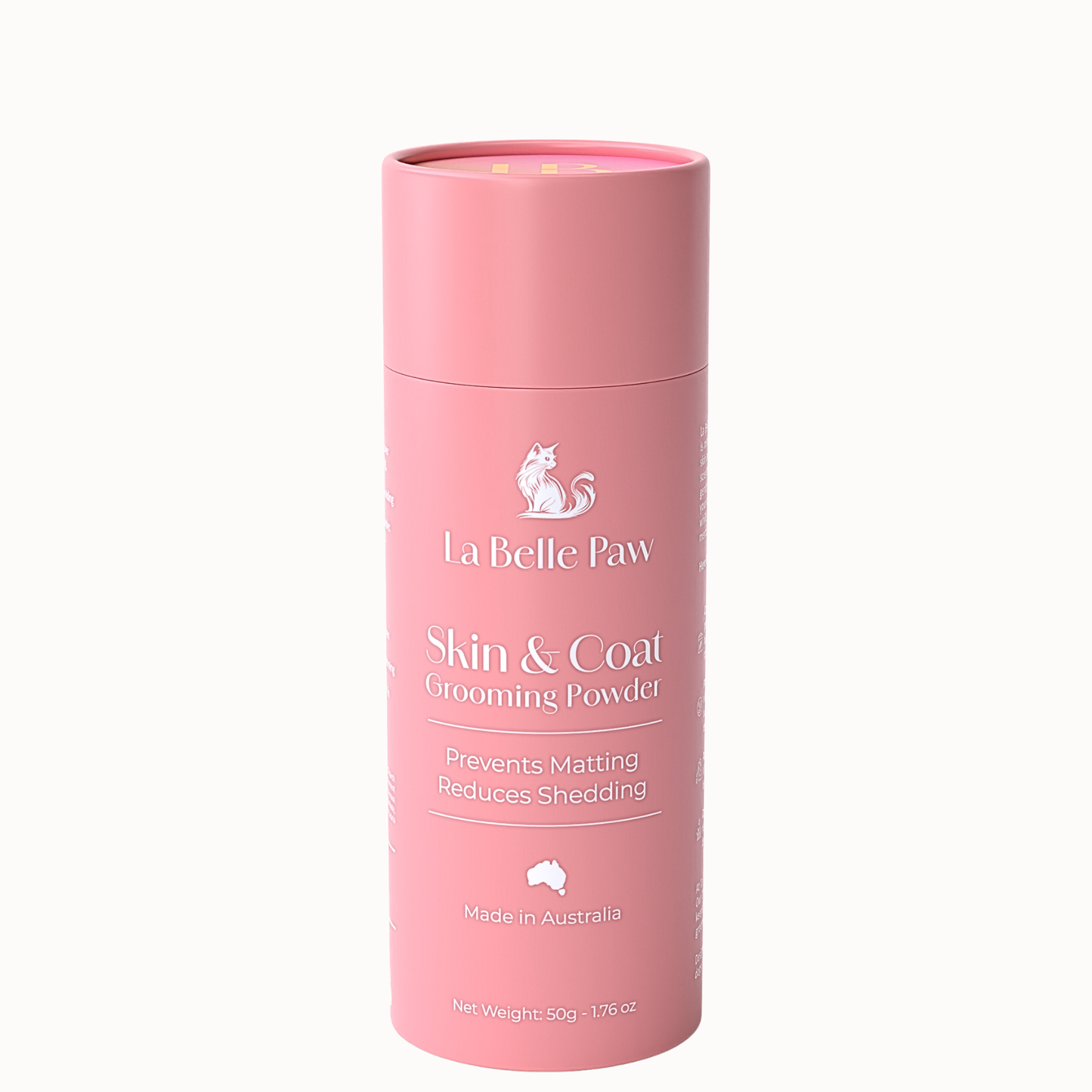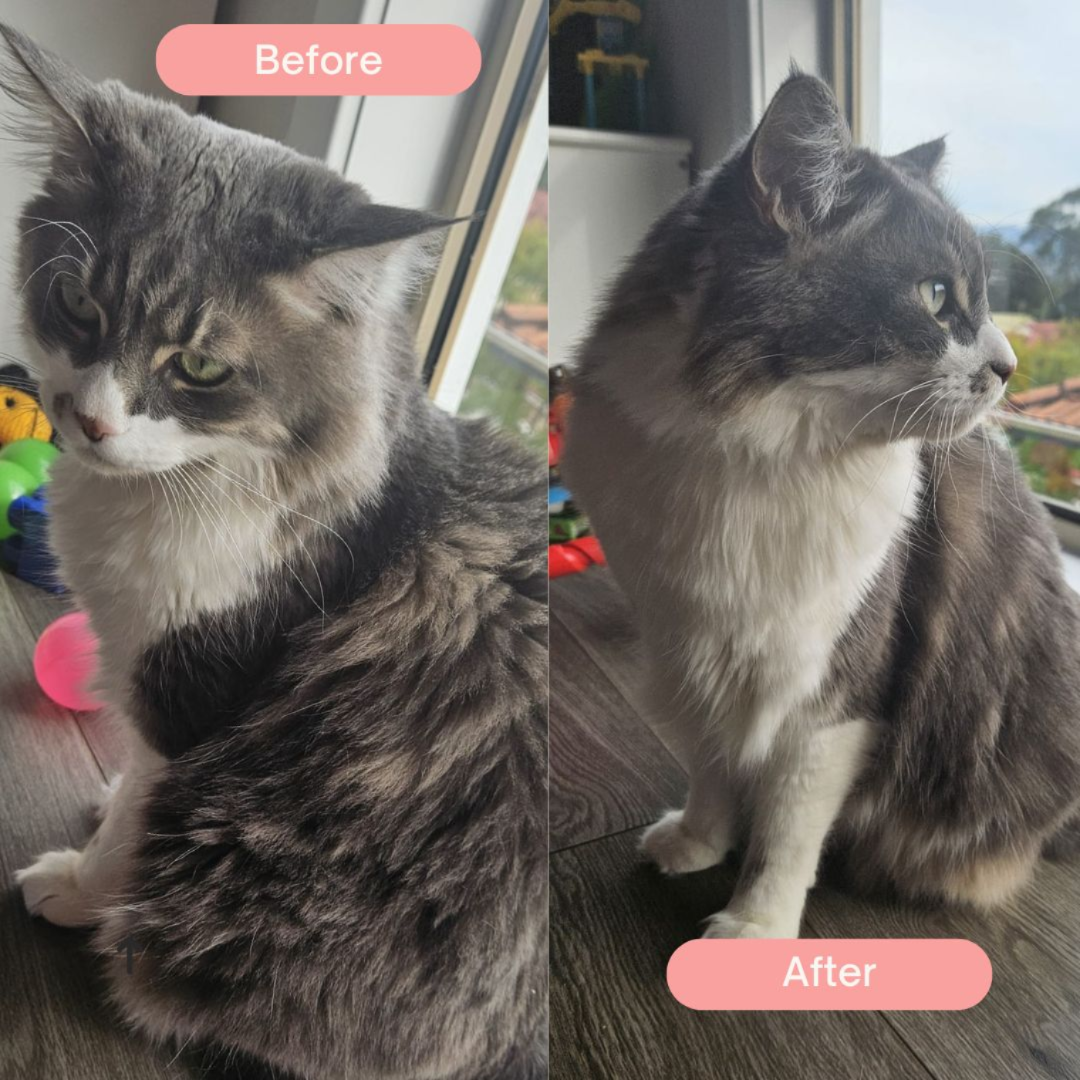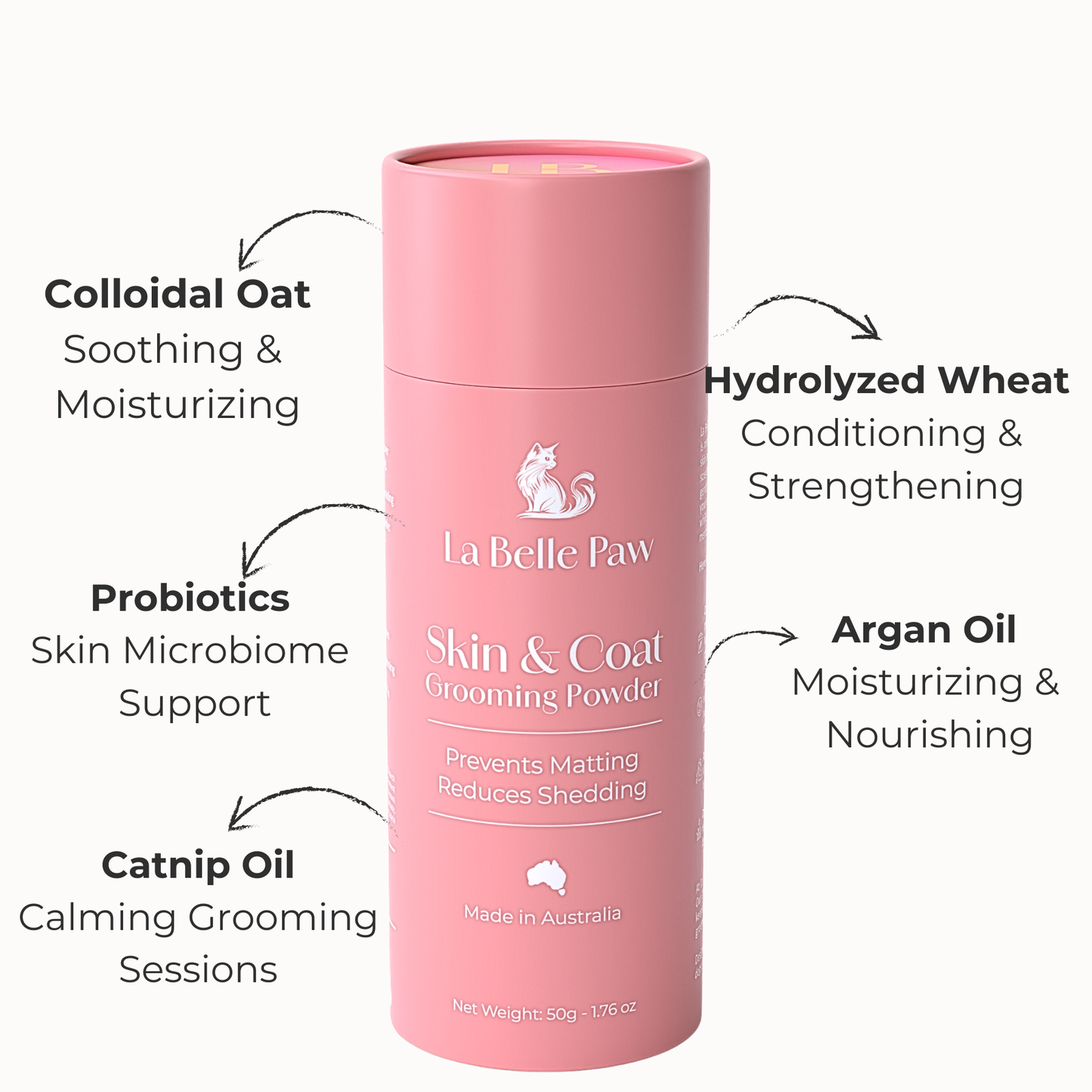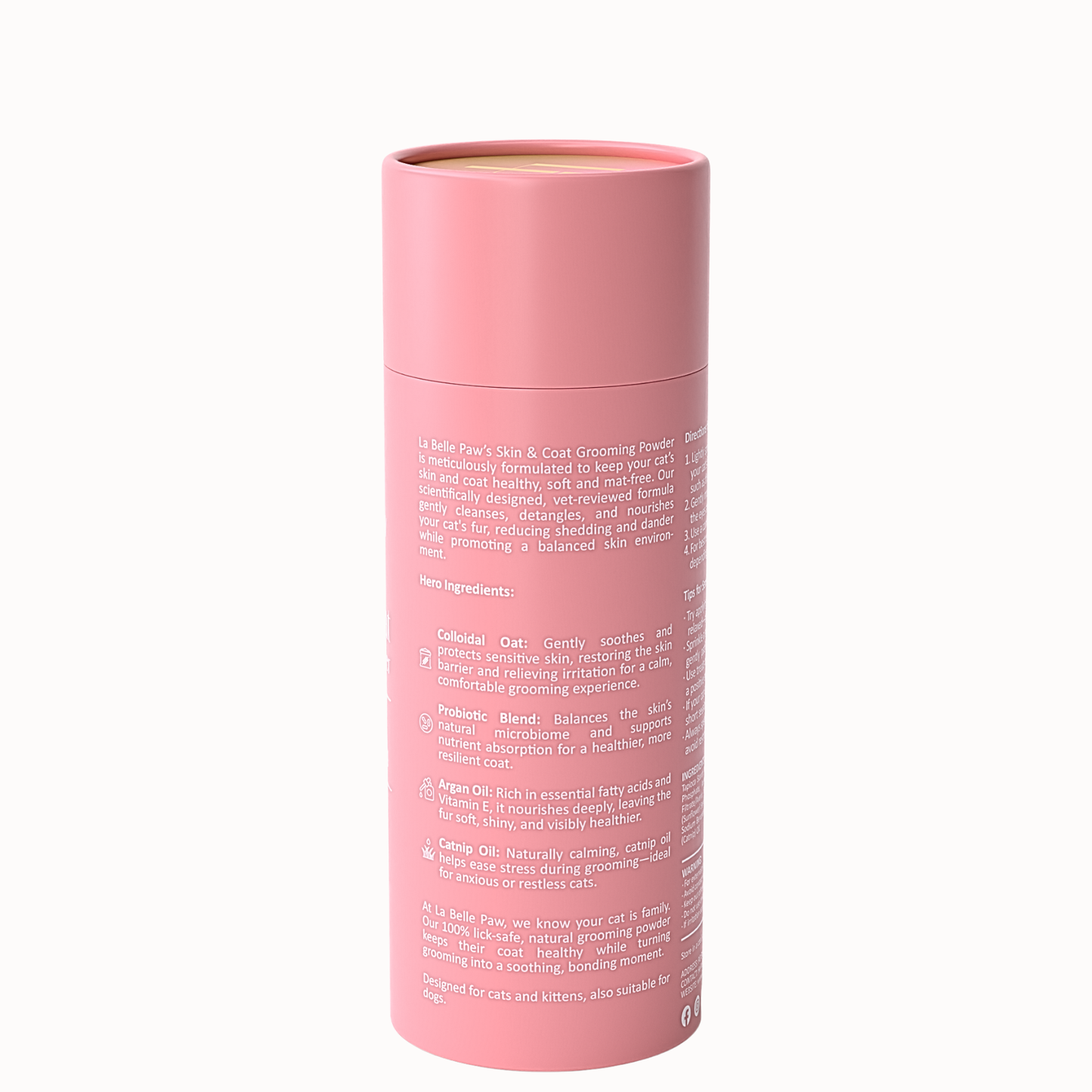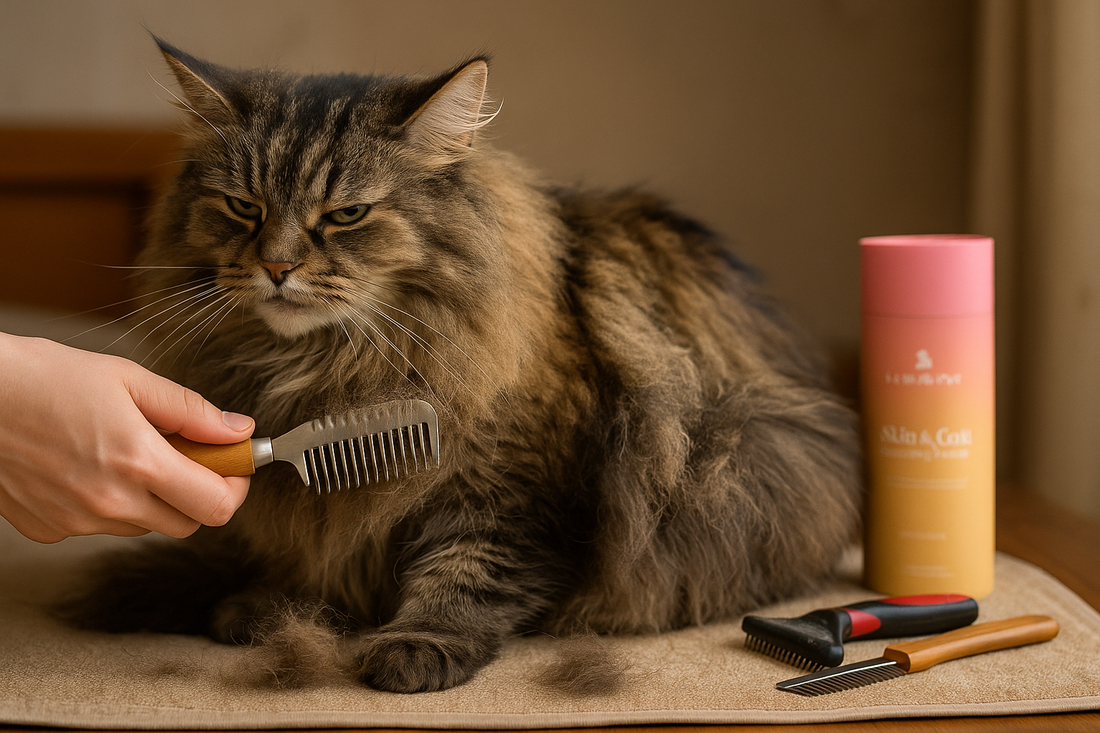
How to Remove Mats from Your Cat’s Fur Without Stress or Struggle
Share
How to Remove Mats from Your Cat’s Fur Without Stress or Struggle
If you’ve ever tried to brush your cat and ended up staring at a tangled, clumped mess of fur, you’re not alone. Mats in a cat’s coat are more than just unsightly—they can be painful and even harmful to your cat’s health. So if you're searching for how to remove mat cat safely and gently, you're in the right place.
In this article, we’ll walk you through why mats happen, how to prevent them, and how to remove them without turning grooming time into a wrestling match. And we’ll also introduce a simple product that helps keep your cat’s coat mat-free between grooming sessions—our Skin & Coat Grooming Powder.
Why Do Cats Get Mats in the First Place?
Mats are tightly tangled clumps of fur that occur when your cat’s loose hair gets trapped and knotted. While they’re more common in long-haired cats like Persians and Maine Coons, short-haired cats aren’t immune.
What Causes Matting?
-
Lack of brushing
-
Excess shedding
-
Moisture from saliva, water, or urine
-
Friction from collars or sleeping positions
-
Inability to self-groom due to obesity, arthritis, or age
Is Matting Dangerous for Cats?
Yes. Mats don’t just sit on top of the fur—they pull at the skin, causing discomfort, and in some cases, skin infections or sores.
Signs your cat may be in pain from matting:
-
Flinching or growling when touched
-
Avoiding grooming or petting
-
Excessive licking of the area
-
Red, irritated skin beneath the mat
How to Safely Remove a Mat from a Cat
First things first—never cut mats with scissors. It’s far too easy to nick your cat’s skin, and the results can be serious.
Here’s a safe method to remove mats:
Step 1: Stay Calm and Set Up a Quiet Space
Choose a calm, quiet room where your cat feels comfortable. Speak softly and offer treats to ease anxiety.
Step 2: Gently Hold the Mat
Hold the mat at the base (close to the skin) to avoid pulling and hurting your cat.
Step 3: Use a Detangling Spray or Grooming Powder
Spritz a cat-safe detangler or lightly apply Skin & Coat Grooming Powder. The powder helps reduce friction and allows the comb to glide more easily through the fur.
Step 4: Work Slowly with a Dematting Comb
Use a wide-tooth comb or a mat splitter and gently tease the mat apart from the ends, not from the base. Be patient and take breaks if needed.
Step 5: Reward and Reassure
Give your cat treats, praise, and lots of love after each session to create positive associations with grooming.
What If the Mats Are Too Severe?
If the mats are tight against the skin, cover a large area, or are causing your cat pain, don’t try to tackle them yourself. Call a professional groomer or your veterinarian. They have the tools and training to remove mats safely without trauma.
How to Prevent Mats in the Future
Prevention is easier (and far less stressful) than removal.
1. Brush Regularly
Long-haired cats should be brushed daily, and short-haired cats at least once or twice a week.
2. Use Skin & Coat Grooming Powder Between Baths
Our Skin & Coat Grooming Powder is specially formulated to:
-
Absorb excess oil and moisture
-
Soften tangles
-
Reduce shedding
-
Soothe irritated skin
-
Keep fur fresh between grooming sessions
It’s the perfect no-rinse solution for cats who hate water or can’t be bathed often.
3. Trim Trouble Areas
Ask a groomer to do a hygiene clip around the rear, armpits, and behind the ears—common spots for matting.
4. Maintain a Healthy Weight
Obese cats often struggle to reach certain areas to groom. Proper diet and play can make a big difference.
Can I Use Baby Powder or Human Products?
No. Many human products (including baby powder) contain ingredients that are toxic to cats. Always use cat-specific grooming products like Skin & Coat Grooming Powder, which is talc-free, fragrance-free, and lick-safe.
When to Call in the Pros
Here are signs it’s time for a professional groomer:
-
Mats cover more than 20% of the body
-
The mat is tight against the skin
-
Your cat becomes aggressive or panicked
-
You’ve tried brushing with no success
Professional groomers can also recommend grooming schedules and teach you how to brush your cat more effectively.
Conclusion
Mats are a pain—literally—for your cat. But with the right tools, patience, and products, you can remove them gently and prevent them from coming back. Using Skin & Coat Grooming Powder as part of your regular routine keeps your cat’s fur soft, clean, and easier to manage—without stress, scissors, or water.
And remember, if your cat’s coat is severely matted or they won’t allow you to groom them, always consult a professional cat groomer.
FAQs
1. What’s the best tool to remove a mat from a cat?
A dematting comb or wide-tooth metal comb is best. Never use scissors.
2. How often should I use Skin & Coat Grooming Powder?
You can use it 1–2 times per week or whenever your cat’s coat needs freshening or detangling.
3. Can I use human detangler on my cat?
No—human products often contain alcohol, perfumes, or essential oils that are harmful to cats.
4. My cat hates being brushed. What can I do?
Start with short, calm sessions. Use treats and go slowly. If your cat still resists, try using grooming powder first to soften tangles and reduce discomfort.
5. Do I still need to visit a groomer if I use powder at home?
Yes—powder helps maintain the coat between visits, but professional grooming is still needed for deep care, nail trims, and severe mat removal.



